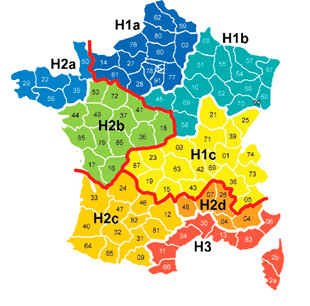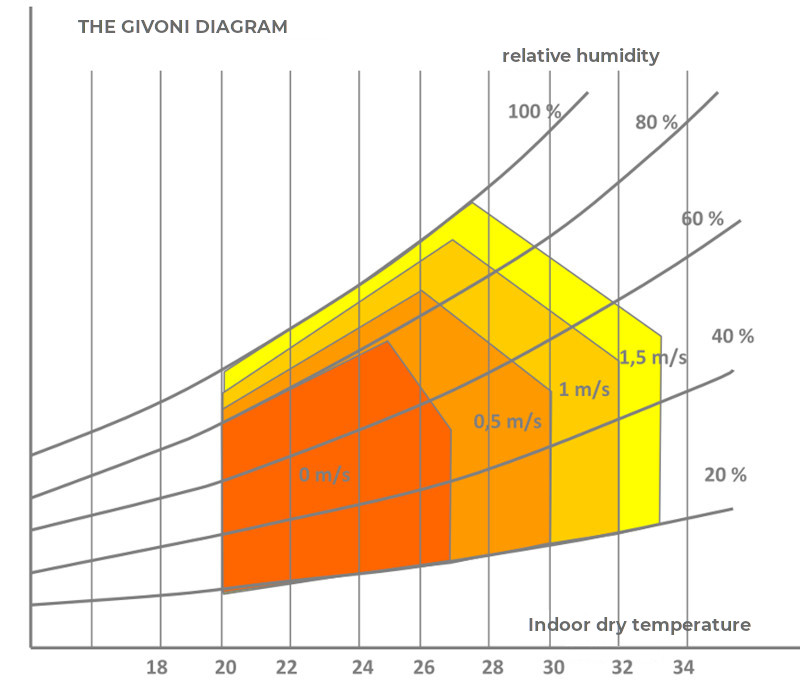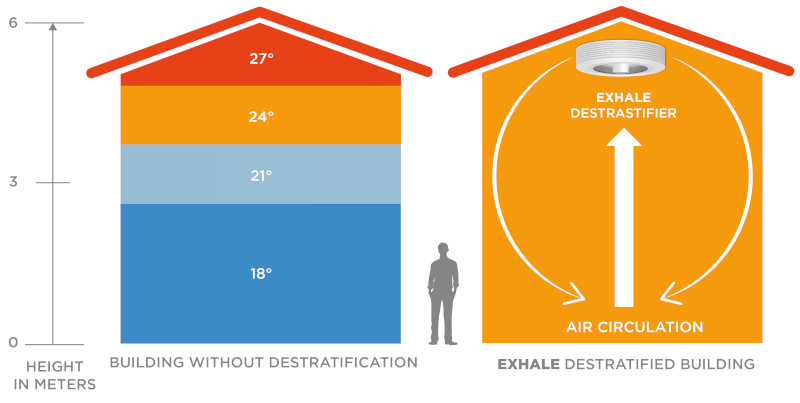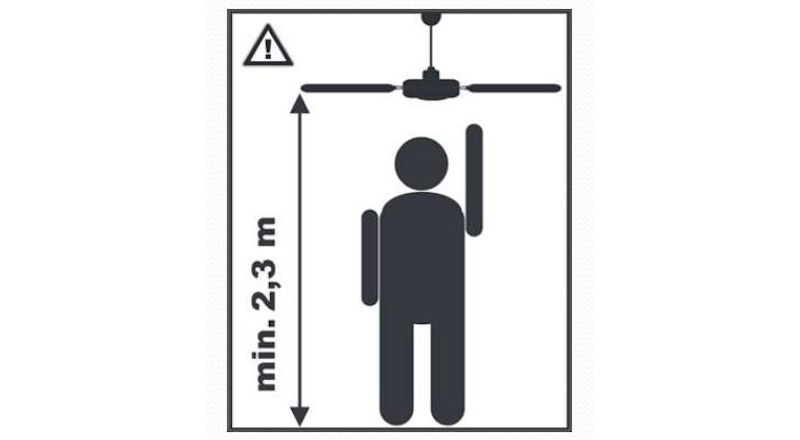RE2020 & Ceiling fans
The new 2020 Environmental Regulations (RE2020) replace the 2012 Thermal Regulations (RT2012). It comes into force in January 2022. To help you find your way around, particularly where ceiling fans are concerned, we invite you to click on one of the headings below.

RE2020 : What is the 2020 Environmental Regulation?
Lire la suite

Summer comfort and RE2020 :
What's new?
Lire la suite

Why are ceiling fans so important in RE2020?
Lire la suite

Lire la suite

Lire la suite

Lire la suite

Lire la suite

Lire la suite

Lire la suite
Mandatory implementation dates for the RE2020
- 1 January 2022: residential buildings or parts of buildings,
- 1st July 2022: construction of office buildings or parts thereof, or d’enseignement primaire ou secondaire,
- 1 January 2023: building extensions (above) and temporary buildings.
The new RE2020 regulations give pride of place to air heaters, which are presented as an economical alternative that is easy to install and consumes few resources.
“Ceiling fans will become the benchmark for limiting discomfort in summer”.
Tribu / Bastide Bondoux / Pouget – 16 July 2021 – report on RE2020 calculation engine
It should be noted that unlike other more complex solutions such as double flow ventilation (VMC Double Flux), which are both complex and expensive, but above all require a considerable amount of living space.
Ceiling fans do not take up any living space, as they are fixed to the ceiling and operate using a simple electrical supply.
At a time when square metres of living space are becoming increasingly expensive, it’s a good idea not to waste any unnecessarily.
The prestigious design offices TRIBU, POUGET & BASTIDE BONDOUX have jointly written a report entitled Etude de sensibilité sur le moteur de calcul réglementaire RE 2020 (Sensitivity study on the RE 2020 regulatory calculation engine).
This one-hundred-page document (available in full in the PRO section) identifies the impact of various solutions for achieving Re2020-compliant and non-compliant buildings.
These solutions include
- Shading solutions
- Canadian wells
- Ceiling fans
- Louvres
- Heat pumps
The RE2020 introduces a new indicator for summer comfort, the DEGREES HOURS (DH).
This is the number of hours of discomfort over a whole year.
This number must be as low as possible to improve the comfort of users/inhabitants.
This number of DH varies from one region to another
To sum up:
- Below DH 350, it complies with
- From DH 350 to DH 1,250, it complies with a penalty (the lower it is, the lower the penalty).
- Above DH1,250 it does not comply, it does not comply
According to the report, ceiling fans: The action of ceiling fans on DH is still highly valued. Fans appear to be a very simple way of drastically reducing discomfort, particularly in zone H3, and are even superior to air handling units in zone H3…
Conclusion
Ceiling fans are finally being included in the Environmental Regulations (RE 2020)
This is recognition of a solution that saves energy and resources.
Fans are effective in improving user comfort.
They have always been popular in hot countries and islands.
Focus on Zone H3
In a category H3 zone (Mediterranean coast), the variations are close to or greater than the maximum Degrees Hours requirement of 1250.
This means that a building with services that strictly comply with RT 2012, without optimising summer comfort, becomes uncomfortable in this climate zone in terms of the RE2020 and its indicators.
The Degrees Hours indicator changes for all types of MI combined:
- In H1a zone: from 605 to 904 DH,
- In the H2b zone: from DH562 to DH1,006,
- In zone H3: from MAD 1,177 to MAD 2,059.

There is a wide range in the number of DHs between the “hot” and “cold” climatic zones. Logically, zone H3 has more discomfort than zones H1a and H2b.
This clearly shows that you can’t build in the same way in the north and south of France.
Differences between RT2012 and RE2020
At the ENERJ Meeting held in Paris on 7 September 2021, TRIBU presented a table summarising the differences between RT2012 and RE2020.
The differences specific to the RE2020 are highlighted in blue.
| RT2012 | RE2020 | |
|---|---|---|
| Date d'implémentation | Depuis 2011 | A partir du 01/01/2022 |
| Surface de référence | Sref (Srt) | Shab pour les logements. SU pour les autres usages |
| Besions Bioclimatiques (Bbio) | Besoins de froid comptés uniquement pour les batiments CE2 | Besoins de froid comptés systématiquement |
| Indicateurs Energie | CEP | Cep, nr et Cep |
| Postes de consommation | Chauffage Refroidissement Eau Chaude Sanitaire Eclairage Auxiliaires | Chauffage Refroidissement Eau Chaude Sanitaire Eclairage Auxiliaires Parking (éclairage et ventilation) Eclairage des parties communes Ascenceurs, escalators |
| Electricité produite | En négatif x 2,58 dans une limite de 15 kWhep/m2.an en logements | Autoconsommable : effacé Export : X0 |
| Indicateurs de confort d'été | Tic (*C) | Degré-heure (*C.h) |
| Indicateurs Carbone | - | Icenergie Icconstruction |
| Calcul Carbone | - | ACV Dynamique |
Source TRIBU – ENERJ Meeting Paris 7 September 2021
Improving summer comfort
Fans are a very simple way of drastically reducing discomfort in summer and between seasons.
Ceiling fans produce a gentle breeze that helps to evacuate perspiration from the skin. The temperature felt by occupants can be as low as -4 degrees.
The Givoni diagram clearly shows that high temperatures are more bearable with air speed.
In the off-season or in summer, fans limit the number of uncomfortable days by allowing air conditioning to start up later in the season.
Ceiling fans also help to reduce energy costs, because increasing the air-conditioning set point by one degree can save 7 to 10% on energy bills.
Ceiling fans have been popular for many years in hot countries and islands that do not use air conditioning.

Avoid heating the ceiling in winter
Although not highlighted in the RE2020, ceiling fans are also useful in winter and between seasons.
They avoid heating the ceiling and improve user comfort by de-stratifying and levelling the temperature from floor to ceiling.
A study by Purdue University in the USA showed that it was possible to save up to 38% in energy costs by coupling a fan to a heating system.

Ceiling fans work in concert with air conditioning & heating
Ceiling fans can be used in conjunction with air-conditioning systems or on their own.
For high ceilings (over 3 metres), they redistribute heat.
For low ceilings (2.50 m), ultra-flat ceiling fans (18-20 cm) allow you to stay above the 2.30 m mark and eliminate the risk of injury.
It’s worth noting that classrooms, colleges and schools prefer the exhale fan, which has no blades, so is risk-free and does not act as an object launcher.

Ask your question about RE2020 & ceiling fans.
Would you like to know more about RE2020 and ventilation systems? Ask our experts.
